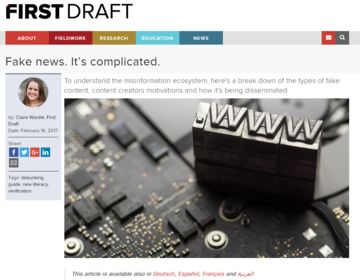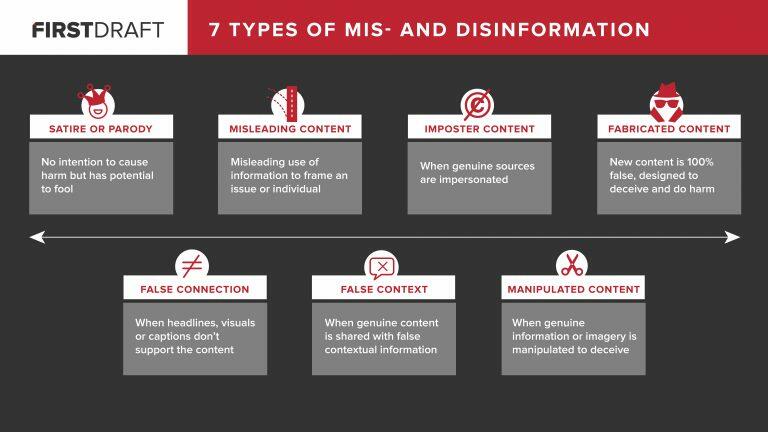
Related contents
Information Disorder: The Essential GlossaryInformation disorder: Toward an interdisciplinary framework for research and policy making
The term "fake news" is increasingly recognised as problematic, but in order to find alternatives - the article argues - it is necessary to understand the current information ecosystem and take into consideration three factors:
- the different types of content;
- the motivation of the creators;
- the ways of dissemination.
The authors distinguish seven types of mis-information and disinformation:
- satire or parody
- misleading content
- imposter content
- fabricated content
- false connection
- false context
- manipulated content
Then they distinguish eight motivations (8 "Ps"), that can be put in a matrix with the different types of mis-information and disinformation:
- poor journalism
- to parody
- to provoke or “punk”
- passion
- partisanship
- profit
- political influence
- propaganda
In terms of dissemination mechanisms, the article finds four:
- unwitting sharing by social media users
- amplification by journalists
- pushing by loosely connected groups
- dissemination in sophisticated disinformation campaigns (botnets and troll factories)
Finally, authors argue that everyone should take responsibility to keep the information ecosystem clean and people should be educated to second guess their instinctual reactions before sharing.
Tags: Fake news and disinformation Media literacyThe content of this article can be used according to the terms of Creative Commons: Attribution-NonCommercial 4.0 International (CC BY-NC 4.0) . To do so use the the wording "this article was originally published on the Resource Centre on Media Freedom in Europe" including a direct active link to the original article page.



